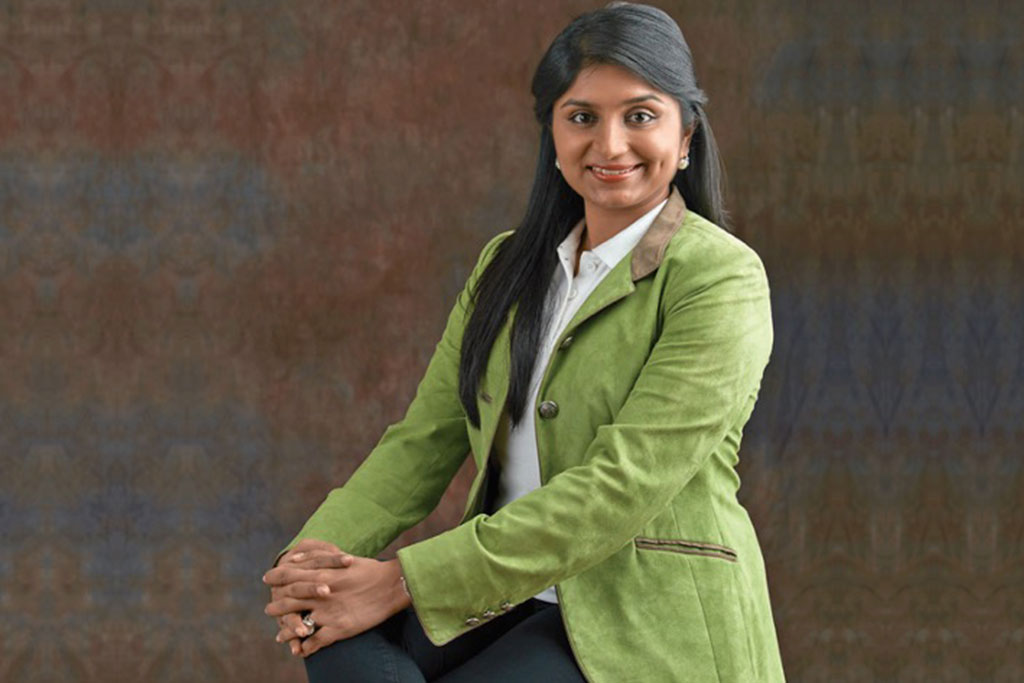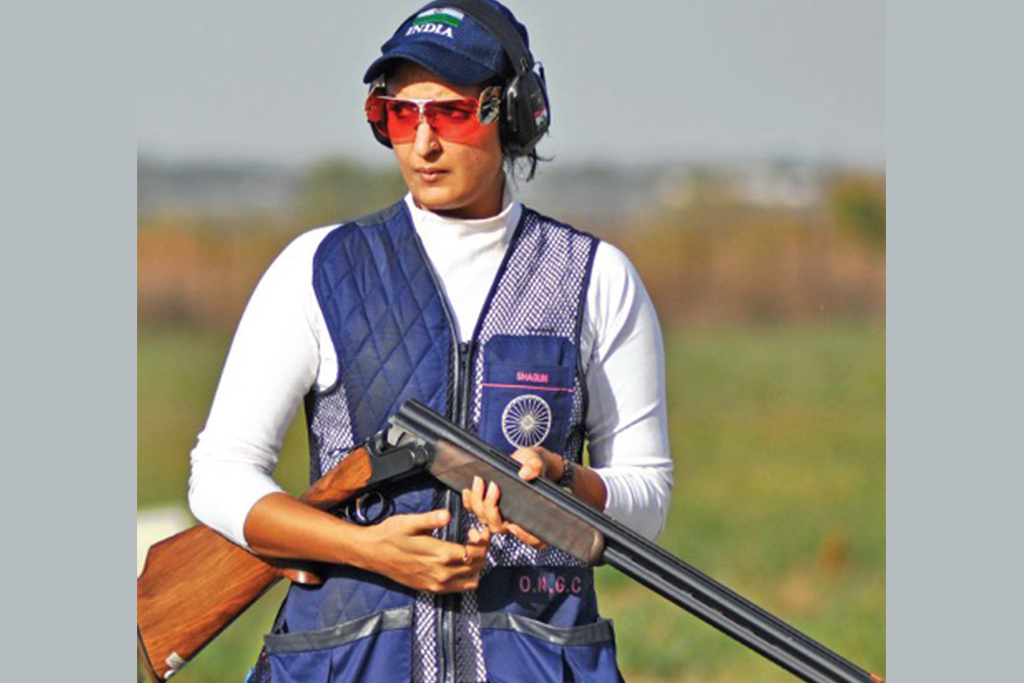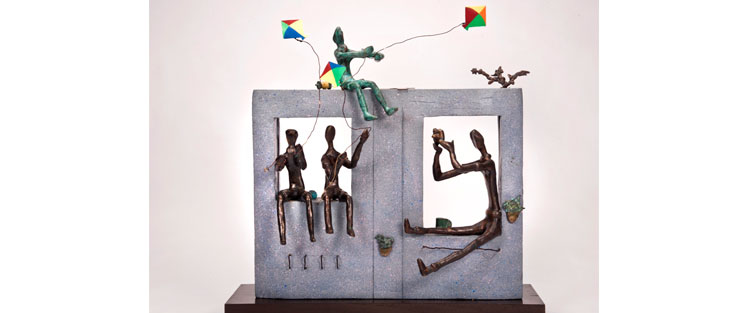
For The Love Of Art
Have you ever seen an impressive line-UP of artwork in corporate houses? Have you ever wondered how a high-end hotel has art made by renowned artists for all its common areas and guest rooms? Well, it’s mostly because of the efforts of art consultants like Aradhana Dalmia. Dalmia’s art studio-cum-consulting company, The Artemist, for example, works with architects and interior designers and also caters to corporate houses and individual clients, helping them tell their stories through art. Speaking about her company’s art consultation process, she says, “We give a bespoke experience to every client, starting from meeting and discussing with the client to conceptualising and commissioning the artwork, to installing it in the client’s space.” Thus, each client gets a unique experience, based on their preferences, interiors, time and budget.
Paintings, sculptures, murals, digital art and artefacts are some of the works that The Artemist commissions and installs for its clients. To procure an artwork that aligns with a client’s specific needs, The Artemist works with famous artists such as Paresh Maity, Seema Kohli, Thota Vaikuntam, Jogen Chowdhury, Jagannath Paul, Ramesh Gorjala, Fenella Elms and Miya Ando. The company also works with artists and sculptors from Rajasthan, Tamil Nadu and West Bengal to both promote and offer traditional Indian artwork to its clients. It also collaborates with national and international art galleries to cater to clients’ tastes and needs.
Till date, The Artemist has completed over 200 projects in cities such as Mumbai, Kolkata, Bengaluru, Delhi, Chandigarh and Surat, to name a few. Its clientele includes big names like CenturyPly, Rupa, the Aditya Birla Group, RMZ Corp, Shyam Metalics, Kenilworth Hotels & Resorts and others.

The Artemist team at The Artemist studio in New Market, Kolkata
A creative bent
Aradhana Dalmia’s creative bent can be traced to her formative years. Born in a typical business-oriented family with roots in Chirawa, Rajasthan, she recalls seeing both the men and the women of the household always involved in some kind of enterprise. The women would express their artistry in everything they did. Reminiscing, she says, “I have seen my grandmothers and aunts experimenting and prospering in various kinds of creative businesses such as making jewellery, crafting textiles and designing heavy Indian apparel from my childhood. This inculcated a healthy mix of creativity and business acumen in me.”
Dalmia thus was exposed to art (and music and dance as well) from an early age, having engaged in drawing and painting from childhood. Moreover, there was art and creativity involved in everything she and her family would do at home, especially when decorating the house during festivals. Boarding school was no different. Dalmia is appreciative of having had the opportunity to learn from amazing and inspiring art teachers at Mussoorie International School and participate in interschool art competitions. All of this translated to art becoming an important part of her life.

A contemporary painting by The Artemist on the bar cabinet of a client’s home in Kolkata
Learning from professionals
After schooling, Dalmia decided to hone her skills by acquiring a ‘Foundation Diploma in Art and Design’ from the University of the Arts London, in 2009. She then acquired her BA (Hons) in Fine Art, Painting and History of Art from the Manchester School of Art, in 2012. For Dalmia, the biggest takeaway from being a student here was getting exposure to the various mediums used in art and design. Looking back, she says, “What also broadened my horizon and outlook was the opportunity I got to interact with people from different walks of life who were tackling the subject in their style. It was a liberating experience to go to art school and be in the inspiring company of like-minded creative peers.”
To arm herself with knowledge of the art world, in 2016, Dalmia went on to acquire certificate in art business from Sotheby’s Institute of Art in New York. She also pursued a course in arts, marketing and communications at the Sotheby’s Institute of Art in London, in 2020.
Showcasing her talent
When Dalmia returned home to Kolkata after completing her BA (Hons), inspired by the talented artists and rich art around her, she decided to put to application all that she had learnt in college. She began making oil paintings—even creating her glow-in-the-dark oil paint in the process—and showcasing her work in art galleries and workshops. To further discover what she wanted to do with her life, she started teaching art therapy and then also worked as a photography teacher at Studio Pomegranate in Kolkata from 2013 to 2015. While she was pursuing all these vocations, she got to interact with many people from the Indian art world. She realised that even though there were buyers who desired to own something unique in art and that there were many talented artists who could recreate the buyer’s vision in their work, there was a gap between the two. And so was born The Artemist—for Dalmia felt that an art consultancy could be the link between artists and buyers.

A painting by Arjun Bhattacharjee that was commissioned by The Artemist for a client’s home in Bengaluru
In the business
Initially, Dalmia started alone from her studio-cum-office in Kolkata, painting and executing the first few orders on her own. Explaining the art consultation process to clients was no easy task and neither was achieving quality in every customised order going out under The Artemist’s name. But despite all impediments, the business grew over the years and today The Artemist caters to clients across the globe. Its in-house team has also increased to 10 members, who are spread across the main office in Kolkata and a work-from-home set-up in Bengaluru.
As an art consultant, Dalmia loves to conceptualise new ideas with artists and designers and satisfy clients’ requirements. Asked what she plans to accomplish in the future, she says, “The idea is to expand the client base, collaborate with more artists, expand to more art forms and make Indian art accessible to the global market and vice versa. We also aim to cater to young art collectors and broaden our horizons by including new-age digital art forms.”









